India is one of the largest countries in the world and is home to the magnificent Taj Mahal, as well as some of the most beautiful scenery in the world.
Though they are not well known around the world, India also has some of the most unique and stunning horse breeds.
There are nine common Indian horse breeds: the Marwari, Kathiawari, Spiti, Bhutia, Manipuri, Zanskari, Bhimthadi, Chummarti, and Sikang. These nine horse breeds have full or partial origins in India.
Horses play an important part in the economy in rural India. They have many important roles including agricultural work, transportation, and riding. In addition, horses also play an important to the culture of India. Read more about each fascinating breed below.
Here are nine native Indian horse breeds.
1. Marwari
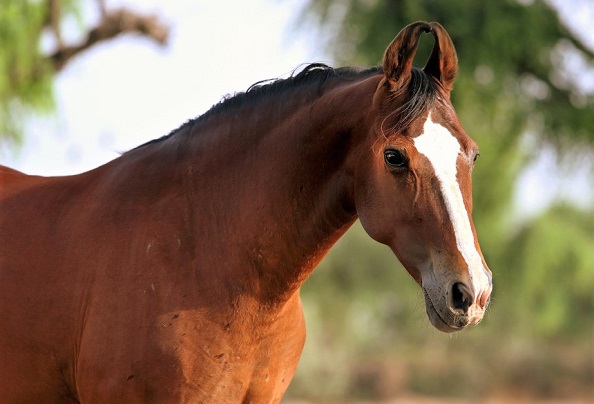
Daria Koskova / Shutterstock.com
The Marwari is India’s most unique and recognizable horse breed. The breed originates from the Marwar (or Jodhpur) region of Rajasthan, where they were first bred in the 12th century as a fierce cavalry horse, descended from Arabians and local ponies.
Thanks to their loyalty, the Marwari has been a top choice of the Indian military in Jodhpur and Jaipur. These unique horses are also popular for parades and ceremonies in India. They are hardy, athletic horses with excellent endurance and they are also capable of withstanding hot desert environments.
For decades, The Indian government banned the export of this special breed. However, from 2000-2006, India lifted the ban and allowed a small number of horses to be exported.
In 2008, India began allowing Marwari horses to be “temporary exports” for up to a year for exhibition in other countries.
What makes Marwari horses so distinct is their unique ears. Their ears curve at the top, causing the tips of their ears to touch.
Marwari horses have a high set neck, athletic build, and refined head. They have an average height of 14 to 16 hands and come in all colors, except for piebald and skewbald. Marwari horses have many uses including polo, dressage, endurance, in-hand, and show jumping.
2. Kathiawari

Ashwin Bavadiya / Shutterstock.com
The Kathiawari breed is closely related to the Marwari breed. Kathiawari horses originate from the Kathiawar peninsula of Gujarat in western India.
Thanks to their outstanding endurance, the Kathi people originally bred the Kathiawari horse as a desert warhorse. Kathiawari horses would travel long distances across rough terrain with minimal food. Like the Marwari, their origins trace back to the Arabian horse.
Kathiawari horses also display distinctly curved ears that touch at the tips. They have a crested neck, athletic build, and a refined head. Kathiawari horses stand around 14.2- 15 hands tall and come in every color but black.
Due to their athleticism, they are commonly used for riding, driving, police mounts, and tent pegging.
3. Spiti
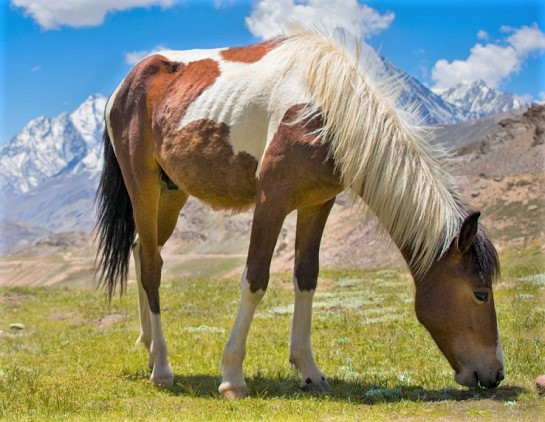
Himanshu Chand / Shutterstock.com
Native to northern India, the Spiti horse is a small mountain pony named after the Spiti river. Though not much is known about their origins, they share similarities to Mongolian and Tibetan breeds and are closely related to the Zanskari breed.
Spiti ponies are primarily only bred with traditional breeding methods around their home area along the Spiti River. Due to this, there are only around 4,000 Spiti ponies.
A group of local villages keeps the mares and stallions separate. Once a year, the mares are bred to one stallion, with a different stallion being used every year.
Spiti ponies are on average 9 to 12 hands tall and commonly bay, black, piebald, or grey in color. They have a compact body with a deep chest and thick coat. These hardy ponies make reliable choices as pack horses and for general riding.
4. Bhutia
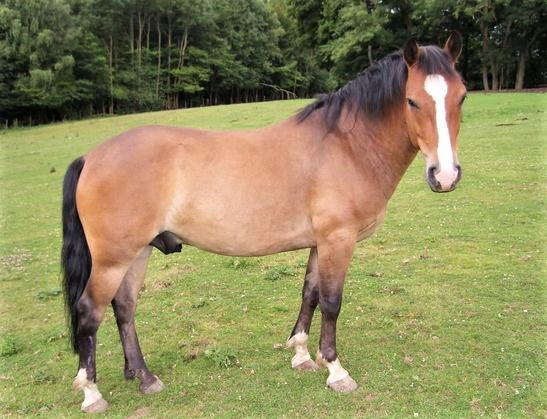
The Bhutia is a small breed of horse from the Sikkim and the Darjeeling regions of northern India. They are a sturdy breed, capable of handling harsh mountain terrains and climates.
The Bhutia share many similarities to Tibetan and Mongolian breeds. Though their origins are unclear, they likely come from locally bred ponies and horses. Because of their tough nature, there are commonly used as pack horses and for light agricultural work.
Bhutia horses are on average 12.3 to 14.3 hands tall and are typically bay or gray in color. They have short necks, large heads, and deep chests.
5. Manipuri
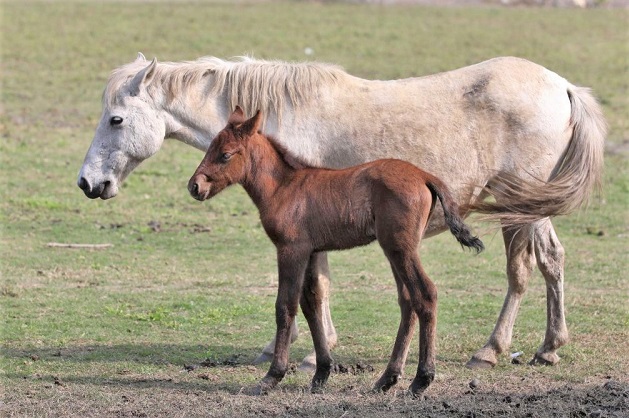
Photo by Pamela Flanagan
The Manipuri is a rare breed of pony from Manipur in northeast India. Experts believe that they are descendants of Mongolian Wild Horses and Arabians, along with other pony stock.
Manipuri ponies have been bred for centuries in northern India and were once popular choices for warhorses. Manipuris were also the first breed to be used in polo.
In the late 19th and early 20th centuries, Manipuris were highly sought after by the British as polo ponies. They were even crossed with Arabian blood to help improve the breed for polo.
The Manipuri pony has a light head, broad chest, and well-muscled body. They stand between 11-13 hands tall and come in just about every color. They are still popular today as polo ponies.
6. Zanskari

Joe Ravi / Shutterstock.com
The Zanskari is a small mountain breed of pony native to Ladakh, in northern India. The breed gets its name from the Zanskar valley.
Zanskari ponies exhibit many similarities to Spiti ponies and Tibetan horse breeds. This hardy breed is capable of withstanding treacherous mountain conditions including frigid temperatures and altitudes of 3000-5000 meters above sea level. Their numbers were once in the thousands, however, today there are only a few hundred.
Zanskari ponies have a compact, hardy build with deep chests. They stand around 11.3-13.3 hands tall and are most commonly gray, though they can also be bay, chestnut, and back. The primary use of the Zanskari breed is a packhorse, as they are sturdy in nature.
7. Bhimthadi
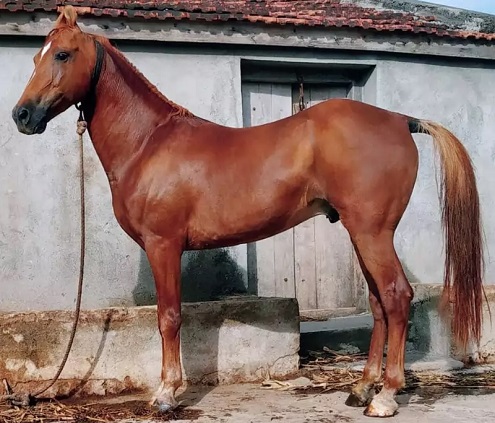
The Bhimthadi, or Deccani horse is a rare Indian breed that is almost extinct. The breed was developed in the 18th and 19th centuries by crossing Arabian and Turkic breeds with local ponies.
Bhimthadi horses were once highly sought after by rulers in India. They were a popular choice as a warhorse and were used to fight the Mughal army. The Martha army highly regarded these small horses.
During British rule, their numbers plummeted and today there are only around 100 horses, though efforts are being made to save this breed.
Bhimthadi horses have a light but muscular build and are often bay, roan, or brown. Their uses include pack work, general riding, and driving.
8. Chummarti

The Chummarti breed is native to the Himalayas, originating in the Chummarti Valley and mainly found in Himachal Pradesh. They are a small mountain breed that is capable of withstanding tough conditions.
The Chummarti pony is similar to the Spiti pony. They are a tough breed, capable of surviving freezing winters at high altitudes, along with hot summer days. They are also a gaited breed, making them a smooth horse for riding.
Chummarti ponies have a hardy, compact build, and a well-muscled body. They stand at 13 hands or under and come in various coat colors. These trusty ponies make excellent pack horses.
9. Sikang
The Sikang horses have been used as warhorses for many years, including in WWII. Though they are not yet necessarily a formal breed, they have a long, rich history.
During WWII, the U.S. Army led 2,000 horses through the Sikang province, however, not all the horses were able to make it past the treacherous terrain. The horses left behind then formed semi-feral herds.
Locals recaptured some of these semi-feral horses, breeding them with local Indian stock. These led to a stronger, taller horse with a well-muscled body. Sikang horses vary in height and color, but are notable for their willingness to please.
Source: horseyhooves.com








